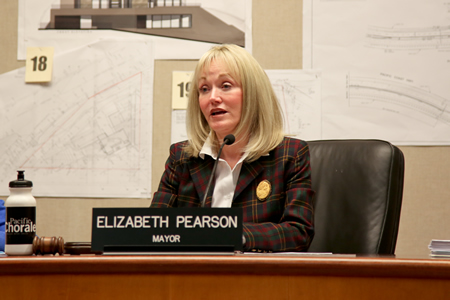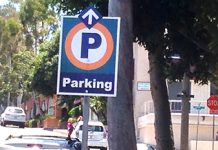
In her final state of the city address, Laguna Beach Mayor Elizabeth Pearson painted a detailed portrait of the city’s economy and shifting demographics, which is both aging and shrinking.
She also drew some eye-opening conclusions about where the town stands today in comparing the most recent 2010 census figures to those of 2000 at the annual Chamber of Commerce event held at the Montage last week. And her broad brushstrokes provided context for issues currently being debated about public safety, traffic and land use and their claim on the city’s financial and human resources.
Laguna saw a 50 percent turnover of households from 2000 to 2010, a decade that also yielded a population decrease, which Pearson pointed out could be related to a preponderance of second-home purchases. Additionally, average household income increased by 20 percent over the same period, she said.
The real estate slump seemed to provide a catalyst for change, since it enticed second-home seekers as well as new professionals with young families to take advantage of good deals on foreclosures and short sales, she said.
Even so, said Pearson, the median age of residents increased to 48 in 2010 from 43.4 in 2000, and home values have risen by 53 percent over the same period, which continues to “make it hard for young folks to live here.”
On the economic front, Pearson pointed out that property taxes make up 54 percent of the city’s operating revenues, followed by bed taxes at 11 percent and sales taxes at 10 percent. The numbers reveal Laguna’s economic dependence on tourism and the importance of sensitivity to visitors’ needs, she said.
Pearson, executive director of Santa Ana’s Pacific Chorale, urged ensuring the health of local arts organizations, as they generate about $49 million annually in economic benefit to the city.
Laguna’s future economic growth depends on appreciating home values and a continual, if not rising, revenue stream from tourists, she said.
City priorities have made increasing demands on the city’s budget and the time of city staff and elected officials, she pointed out. These include public safety concerns ranging from disaster preparedness and undergrounding utility poles to improving major arteries and neighborhood crime.
The next biggest concern is traffic, parking and circulation, which Pearson called a “push-pull” issue since residents oppose building parking for fear of bringing in too many visitors, while businesses want just that.
She noted that land use in Laguna Canyon is another push-pull issue where resident concerns clash with proposed projects. At the same time, city administrators are wrestling with a view preservation law, urban planning decisions, an evaluation of local public transit, complete streets improvements and unfunded pension fund liability, among other issues.
There are competing interest groups on every front.
“How do we juggle it all – and with respect for each other’s unique needs? That’s the question isn’t it?” concluded Pearson, who announced in April she will not seek re-election after serving 12 years on the City Council.





[…] Elizabeth Pearson’s article last week (“Mayor Provides a Snap Shot” May 16 edition) emphasizes the importance of businesses as well as tourism to finances and the […]